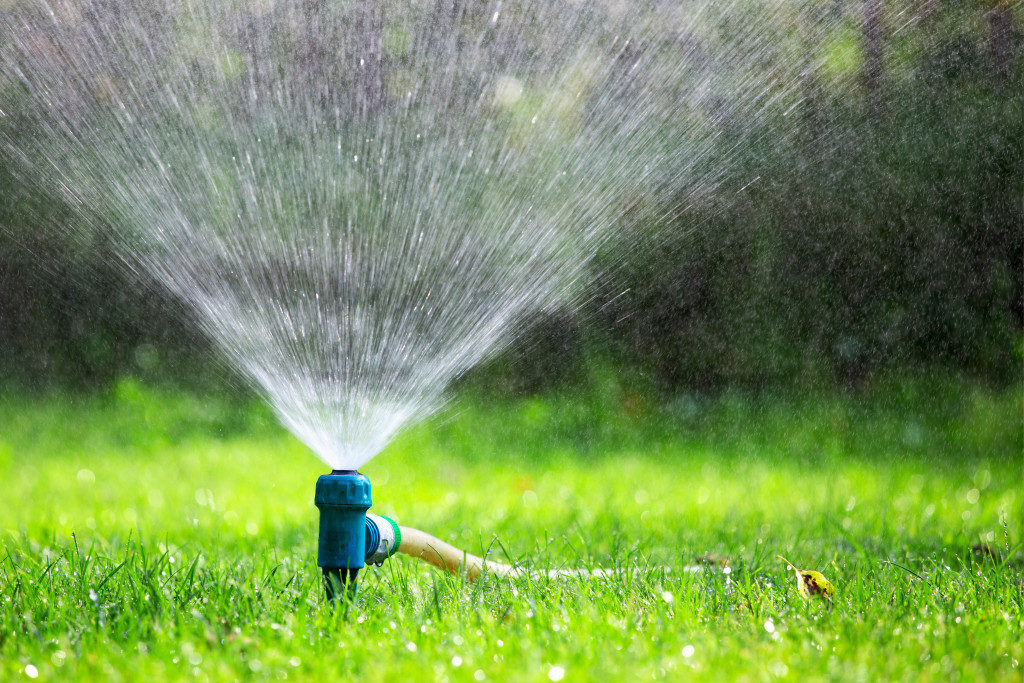Every landscape garden can benefit from an irrigation and sprinkler system. An irrigation line helps distribute water directly to the root zone, while a sprinkler automatically delivers water evenly to all the plants. But just like any plumbing operations, they can also experience issues like blockage and leaks.
A broken irrigation line can lead to a sequence of problems — a leak, for example, may decrease water pressure and volume, and when the leak is aggravated, it may cause a mudslide. On the other hand, a garden hose that’s attached to a sprinkler may suffer a tear due to extremely hot weather, causing leaks as well.
Therefore, it’s important to know what causes irrigation and sprinkler issues in the first place, so that damages can be prevented immediately. A sprinkler hose can easily be fixed by a skilled sprinkler repair expert in Lindon, Utah, or any other area, but an irrigation problem can be more tricky to resolve. That said, let’s take a look the possible damage culprits.
Causes of Irrigation Line Problems
An irrigation line problem can be caused by human error or accidents. Given that they are buried underground, the irrigation lines are hidden from view, so people walking on the garden may be unknowingly compacting the soil. Pets and vehicles may also do this, and when the irrigation lines repeatedly suffer pressure from the soil pressing down on them, they may crush, unless their material is sturdy enough to withstand the pressure.
If your irrigation lines are located above ground, the chances of accidentally destroying them become even higher. Your lawnmower’s blade may run into them, resulting in wasteful water runoff.
In the winter, the water running through the lines may freeze, causing an expansion, which may potentially lead to a burst. A solution to this is using a more flexible material that can endure expansions and contractions. A good material for irrigation lines in cooler regions is poly pipe, while it is PVC for those in warmer regions. Landscape keepers also prevent bursting by flushing out most of the water during the winter.
If you own a gray water irrigation system, it may be prone to blockage, since the used water may contain debris. The key is to always ensure that the water flow is properly filtered so that the debris won’t collect inside the irrigation line and obstruct the pipes.
Animals and plants may also put your irrigation lines at risk of damages, particularly from bites and overgrown roots. To fix a damaged irrigation line, isolate the source of the problem, and either patch or replace the broken segment of the pipe or tubing. If the lines are above ground, you can simply trace the source of the leak while the watching water run. If it is underground, the sign of the leak should be a wet patch of soil. Shut off the water supply, and dig the soil so you can patch or replace the broken pipe.
 Fixing a Broken Sprinkler Hose
Fixing a Broken Sprinkler Hose
A small leak can be mended by simply wrapping an electric tape around the hole or tear. If it’s the ends that are leaking, replace the rubber washers at each end of the hose, pressing them inward as far as they can go.
For large center leaks, cut the leaking portion, then loosen the screw on each side of the coupler. Drop a small amount of dish soap into the hose through the cut areas, and insert each side of the coupler into the repair area. Tighten the clamps on both ends of the hose, and test if the leak has been fixed.
In most cases, irrigation and sprinkler repairs could be a trial and error process, so it’s best to entrust the job to the pros. Once they’re fixed, be sure to maintain their working conditions to prevent any more damage that may affect your entire garden.
